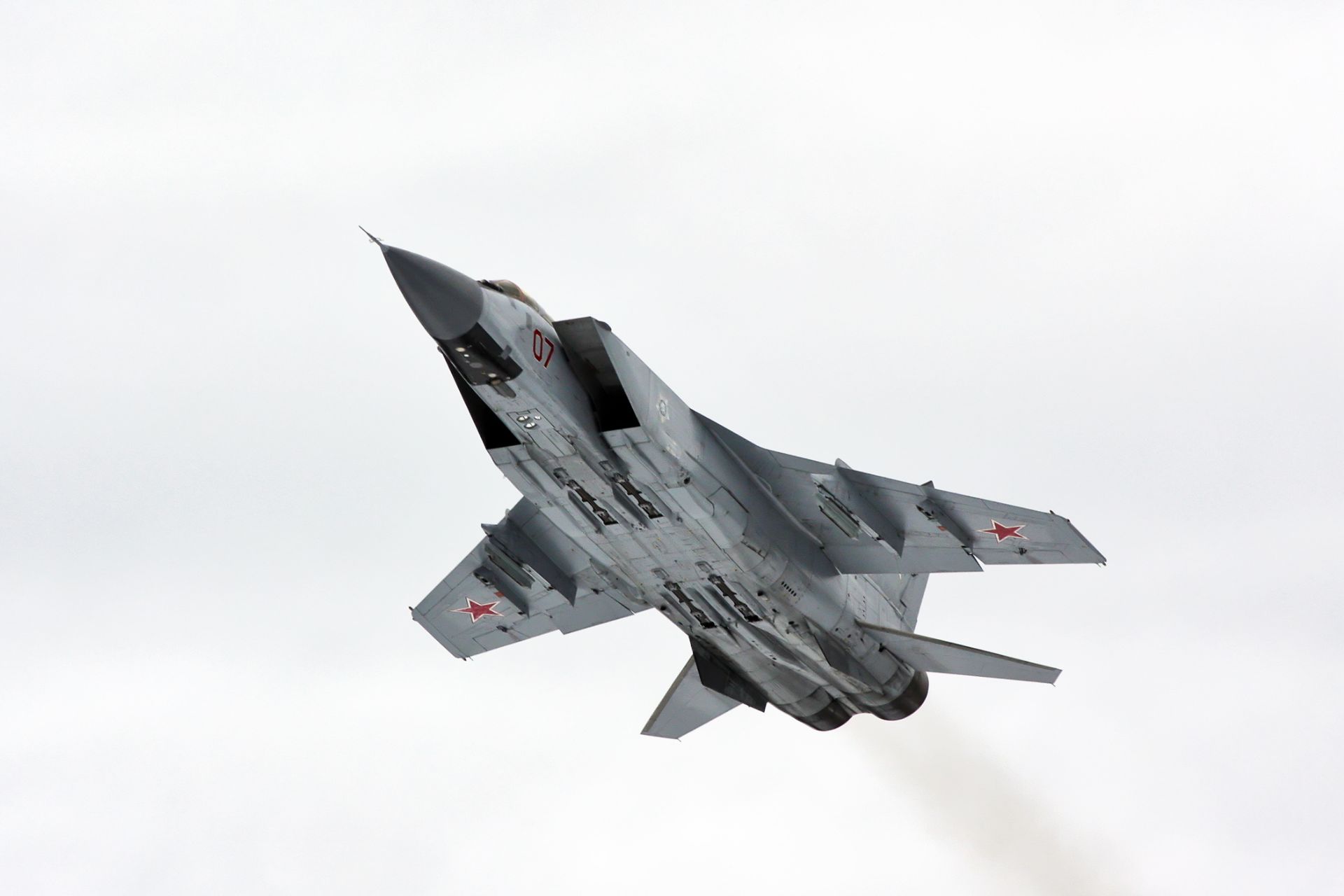Alert: New Russian KS-172 Air-to-Air Missile Extends MIG-31s Engagement Range to 400 km

{loadposition bannertop}
{loadposition sidebarpub}
On May 19, 2025, Russia’s United Aircraft Corporation (UAC) significantly raised the stakes in the air-to-air defense domain by upgrading its iconic MiG-31 interceptor with the integration of the new KS-172 long-range missile system. Originally developed during the Cold War to intercept strategic bombers at supersonic speeds and high altitudes, the MiG-31 now enters a new phase of capability evolution, one that could redefine the concept of extended-range air dominance. In an era where rapid reaction time and superior standoff capabilities are decisive, the renewed potency of the MiG-31 represents a major technological and strategic breakthrough. This development comes at a time of escalating global tensions, increasing military competition in high-altitude domains, and a renewed focus on intercepting next-generation threats before they reach their target.
Follow Army Recognition on Google News at this link
According to Russian military expert Konstantin Sivkov, the KS-172 surpasses the R-37 in compactness while offering a formidable range of over 400 kilometers. (Picture source: Vitaly V. Kuzmin )
The MiG-31, developed by the Russian aerospace giant UAC, remains one of the fastest operational military aircraft in the world, capable of speeds up to Mach 2.83 and altitudes exceeding 20,000 meters. It is equipped with the powerful Zaslon-M phased-array radar system, which can simultaneously track 24 targets and engage up to 8. Designed for long-range interception, the aircraft was initially paired with the R-33, with a range of up to 300 km, and later the R-37M missile, with a range of 150–400 km. However, the introduction of the KS-172 represents a leap in lethality. According to Russian military expert Konstantin Sivkov, the KS-172 surpasses the R-37 in compactness while offering a formidable range of over 400 kilometers. This missile dramatically extends the engagement envelope of the MiG-31, enabling it to strike strategic targets like AWACS aircraft, aerial refueling tankers, and stealth platforms before they can operate effectively.
The MiG-31, designated “Foxhound” by NATO, was developed in the 1970s as a successor to the MiG-25. It was the first Soviet aircraft with a phased-array radar and remains one of the few platforms specifically built to intercept high-speed and high-altitude targets such as cruise missiles, reconnaissance aircraft, and bombers. Over the decades, the platform has undergone several modernization phases, notably the MiG-31BM and MiG-31K variants, the latter being adapted to carry the Kinzhal hypersonic missile. The KS-172 missile project, which had initially faced development pauses and budgetary hurdles, has now re-emerged as part of a broader Russian effort to enhance its long-range aerospace deterrence.
In contrast to Western equivalents like the American AIM-120D or the Chinese PL-15, the KS-172’s range stands out dramatically. While the AIM-120D offers a maximum range of around 160–180 km and the PL-15 extends to 300 km, the KS-172’s 400 km capability places it in a category of its own. The missile’s compactness, as noted by Sivkov, allows greater payload flexibility and potentially even multirole deployment on other platforms. Historically, attempts at similar very long-range missile systems, such as India’s version of the KS-172 or early Soviet attempts, suffered from weight, guidance, and propulsion limitations. The recent progress in Russian missile miniaturization and propulsion efficiency now gives the MiG-31 an unmatched first-strike air-to-air reach.
The operational deployment of the MiG-31 with KS-172 missiles carries major implications for both regional and global air power dynamics. From a geopolitical perspective, it strengthens Russia’s anti-access/area denial (A2/AD) capabilities over vast airspaces such as the Arctic, Eastern Europe, and the Pacific. Militarily, it imposes significant risks on high-value Western aerial assets, including JSTARS, AWACS, and tankers, which are critical for operational coordination and power projection. The KS-172 enables Russia to threaten these assets from standoff distances, complicating NATO and U.S. air planning and potentially deterring early entry operations in contested zones. The MiG-31 thus evolves from a high-speed interceptor into a strategic aerial sniper.
The MiG-31, once an aging Cold War relic, is being transformed into one of the most formidable aerial interceptors of the 21st century thanks to the integration of the KS-172 missile. With this upgrade, the platform not only gains an extended reach but also a new role in strategic deterrence and first-strike air superiority missions. In a world where control of the skies often determines the outcome of modern conflicts, the MiG-31’s evolution is more than a technological update, it is a clear signal of Russia’s intent to maintain dominance in aerial defense and deny enemy forces the ability to maneuver uncontested. As long as the MiG-31 flies with the KS-172 under its wings, it will remain one of the deadliest airborne threats in existence.

{loadposition bannertop}
{loadposition sidebarpub}
On May 19, 2025, Russia’s United Aircraft Corporation (UAC) significantly raised the stakes in the air-to-air defense domain by upgrading its iconic MiG-31 interceptor with the integration of the new KS-172 long-range missile system. Originally developed during the Cold War to intercept strategic bombers at supersonic speeds and high altitudes, the MiG-31 now enters a new phase of capability evolution, one that could redefine the concept of extended-range air dominance. In an era where rapid reaction time and superior standoff capabilities are decisive, the renewed potency of the MiG-31 represents a major technological and strategic breakthrough. This development comes at a time of escalating global tensions, increasing military competition in high-altitude domains, and a renewed focus on intercepting next-generation threats before they reach their target.
According to Russian military expert Konstantin Sivkov, the KS-172 surpasses the R-37 in compactness while offering a formidable range of over 400 kilometers. (Picture source: Vitaly V. Kuzmin )
The MiG-31, developed by the Russian aerospace giant UAC, remains one of the fastest operational military aircraft in the world, capable of speeds up to Mach 2.83 and altitudes exceeding 20,000 meters. It is equipped with the powerful Zaslon-M phased-array radar system, which can simultaneously track 24 targets and engage up to 8. Designed for long-range interception, the aircraft was initially paired with the R-33, with a range of up to 300 km, and later the R-37M missile, with a range of 150–400 km. However, the introduction of the KS-172 represents a leap in lethality. According to Russian military expert Konstantin Sivkov, the KS-172 surpasses the R-37 in compactness while offering a formidable range of over 400 kilometers. This missile dramatically extends the engagement envelope of the MiG-31, enabling it to strike strategic targets like AWACS aircraft, aerial refueling tankers, and stealth platforms before they can operate effectively.
The MiG-31, designated “Foxhound” by NATO, was developed in the 1970s as a successor to the MiG-25. It was the first Soviet aircraft with a phased-array radar and remains one of the few platforms specifically built to intercept high-speed and high-altitude targets such as cruise missiles, reconnaissance aircraft, and bombers. Over the decades, the platform has undergone several modernization phases, notably the MiG-31BM and MiG-31K variants, the latter being adapted to carry the Kinzhal hypersonic missile. The KS-172 missile project, which had initially faced development pauses and budgetary hurdles, has now re-emerged as part of a broader Russian effort to enhance its long-range aerospace deterrence.
In contrast to Western equivalents like the American AIM-120D or the Chinese PL-15, the KS-172’s range stands out dramatically. While the AIM-120D offers a maximum range of around 160–180 km and the PL-15 extends to 300 km, the KS-172’s 400 km capability places it in a category of its own. The missile’s compactness, as noted by Sivkov, allows greater payload flexibility and potentially even multirole deployment on other platforms. Historically, attempts at similar very long-range missile systems, such as India’s version of the KS-172 or early Soviet attempts, suffered from weight, guidance, and propulsion limitations. The recent progress in Russian missile miniaturization and propulsion efficiency now gives the MiG-31 an unmatched first-strike air-to-air reach.
The operational deployment of the MiG-31 with KS-172 missiles carries major implications for both regional and global air power dynamics. From a geopolitical perspective, it strengthens Russia’s anti-access/area denial (A2/AD) capabilities over vast airspaces such as the Arctic, Eastern Europe, and the Pacific. Militarily, it imposes significant risks on high-value Western aerial assets, including JSTARS, AWACS, and tankers, which are critical for operational coordination and power projection. The KS-172 enables Russia to threaten these assets from standoff distances, complicating NATO and U.S. air planning and potentially deterring early entry operations in contested zones. The MiG-31 thus evolves from a high-speed interceptor into a strategic aerial sniper.
The MiG-31, once an aging Cold War relic, is being transformed into one of the most formidable aerial interceptors of the 21st century thanks to the integration of the KS-172 missile. With this upgrade, the platform not only gains an extended reach but also a new role in strategic deterrence and first-strike air superiority missions. In a world where control of the skies often determines the outcome of modern conflicts, the MiG-31’s evolution is more than a technological update, it is a clear signal of Russia’s intent to maintain dominance in aerial defense and deny enemy forces the ability to maneuver uncontested. As long as the MiG-31 flies with the KS-172 under its wings, it will remain one of the deadliest airborne threats in existence.





